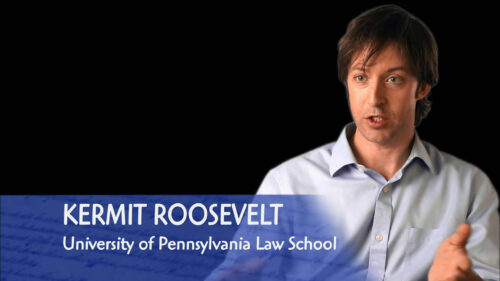Delegates to the Constitutional Convention in 1787 knew they had a challenge ahead: How could they create a system that fixed the weaknesses of the Articles of Confederation written a decade earlier and create a stronger, more unified federal government – while also maintaining the balance of power between the states and the federal government? The Constitution the founders created reflected their focus on that balance of power, and the debate about that delicate balance has continued to the present day.
Each year in advance of Constitution Day, Sept. 17, the Annenberg Public Policy Center’s (APPC) Leonore Annenberg Institute for Civics (LAIC) releases a film as part of its award-winning series designed to engage teachers and students nationwide in learning about facets of the U.S. Constitution. Available on Annenberg Classroom, this year’s new film explores the importance and history of the Constitution’s Commerce Clause, which has had a tremendous impact on the ongoing debate about the balance of state and federal powers.
Article 1, Section 8, of the U.S. Constitution contains the enumerated (specifically defined) powers of Congress. One of those powers is the right “to regulate commerce…among the several states.” Known as the Commerce Clause, this section of the Constitution has shaped the debate between the powers of the federal government and those of the states from the time of the early republic to today. As the film notes, “A single national market would make us one people, one economy, one nation.”
Created by APPC in partnership with The Annenberg Foundation Trust at Sunnylands and produced by The Documentary Group, “Balancing State and Federal Power: The Constitution’s Commerce Clause” is one among more than 65 free, nonpartisan, high-quality short films available to educators, students, and families on Annenberg Classroom.
“Annenberg Classroom contains so many great resources, and I am excited to add another high-quality documentary to the Constitution Project,” said Andrea (Ang) Reidell, LAIC’s director of outreach and curriculum. “The Commerce Clause is an important part of the AP U.S. History course, but students at all levels should learn and understand how that balance of power question has played out in the U.S. From the Supreme Court’s 1824 Gibbons v. Ogden decision that helped define the Commerce Clause, to the 2012 National Federation of Independent Business v. Sebelius case that focused on the Affordable Care Act, since our founding Americans have debated the questions of state vs. federal authority.”
Kermit Roosevelt, the David Berger Professor for the Administration of Justice at the University of Pennsylvania’s Carey Law School, explains in the film a key challenge faced by the founders: “One of the big issues that the Constitution was trying to settle was how [to] have a federal government that is strong enough … to make us a single nation with a single national economy, but at the same time leave something for the states.”
The balance of power that the founders were seeking has played out in court through Supreme Court decisions that shaped how the Commerce Clause was interpreted in different eras. As Neal Katyal, the former Acting Solicitor General of the United States (in photo above right), comments in the film, “the Commerce Clause underlies so much of what contemporary American life is all about.”
Annenberg Classroom provides resources for middle and high school students and features a library of more than 60 videos, including conversations with Supreme Court justices, interactive games, a guide to the Constitution, and other resources. Previous award-winning films in the Constitution Project include:
- “Juneteenth: Exploring Freedom’s Stories”
- “The First Amendment: Student Freedom of Speech”
- “Second Amendment: C. v. Heller and McDonald v. Chicago“
- “Freedom of Assembly: National Socialist Party v. Skokie”
- “The 19th Amendment: A Woman’s Right to Vote”
- “Freedom of the Press: New York Times v. United States”
- “Yick Wo and the Equal Protection Clause”
- “Korematsu and Civil Liberties”






